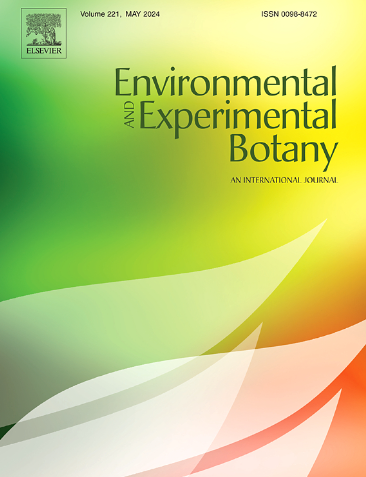在转基因烟草中,共胞菌通过协调解毒、光合保护和胁迫信号传递,使其具有多层抗砷性
IF 4.7
2区 生物学
Q2 ENVIRONMENTAL SCIENCES
引用次数: 0
摘要
植物砷污染通过土壤-植物系统进入食物链,对全球环境健康构成威胁。大型真菌广布铜菌(Coprinellus propagatus)中国毕节砷污染地区特有的je.l ange在砷暴露下表现出特殊的抗砷性,通过生理分析证实。整合转录组学鉴定出关键抗性基因(CdACR3、CdsHSP、CdSEP、cdacsm), qRT-PCR揭示了在长时间砷胁迫下cdacsm和CdACR3的时间依赖性上调。鉴于已有报道的ArsM同源物在植物耐受性中的作用,我们设计了密码子优化的表达cdarsm的烟草转基因。在砷胁迫下,转基因品系表现出增强叶绿体/线粒体完整性,显著减少ROS积累(O₂˙⁻,H₂O₂),降低氧化损伤(减少MDA)和提高抗氧化酶活性。转录组学显示,与野生型相比,砷胁迫转基因(12 h)在光合作用、苯丙代谢、光-昼夜节律信号、能量-碳分配、应激转导和氧化还原稳态中明显富集上调的DEGs。qRT-PCR进一步验证了关键调控因子的进行性上调:磷酸盐转运蛋白(Pht1;1)、金属转运蛋白(MTP1)、转录因子(NAC029)和谷胱甘肽过氧化物酶(GSH2)。这些结果表明cdsm介导的砷抗性涉及互补生理途径的协调激活。本文章由计算机程序翻译,如有差异,请以英文原文为准。
Coprinellus disseminates ArsM confers multi-layer arsenic resistance in transgenic tobacco by coordinating detoxification, photosynthetic protection, and stress signaling
Plant arsenic pollution, entering the food chain via soil-plant systems, constitutes a global environmental health threat. The macrofungus Coprinellus disseminatus (Pers.:Fr.) J.E. Lange, endemic to arsenic-contaminated areas of Bijie, China, exhibits exceptional arsenic resistance confirmed through physiological analysis under arsenic exposure. Integrated transcriptomics identified key resistance genes (CdACR3, CdsHSP, CdSEP, CdArsM), with qRT-PCR revealing time-dependent upregulation of CdArsM and CdACR3 during prolonged arsenic stress. Given reported roles of ArsM orthologs in plant tolerance, we engineered codon-optimized CdArsM-expressing Nicotiana tabacum transgenics. Under arsenic stress, transgenic lines showed enhancing chloroplast/mitochondrial integrity, significantly reducing ROS accumulation (O₂˙⁻, H₂O₂), lower oxidative damage (reduced MDA) and elevating antioxidant enzyme activity. Transcriptomics revealed pronounced enrichment of upregulated DEGs in arsenic-stressed transgenics (12 h) versus wild-type across: photosynthesis, phenylpropanoid metabolism, light-circadian signaling, energy-carbon partitioning, stress transduction, and redox homeostasis. qRT-PCR further validated progressive upregulation of key regulators: phosphate transporter (Pht1;1), metal transporter (MTP1), transcription factor (NAC029), and glutathione peroxidase (GSH2). These results demonstrate CdArsM-mediated arsenic resistance involves coordinated activation of complementary physiological pathways.
求助全文
通过发布文献求助,成功后即可免费获取论文全文。
去求助
来源期刊

Environmental and Experimental Botany
环境科学-环境科学
CiteScore
9.30
自引率
5.30%
发文量
342
审稿时长
26 days
期刊介绍:
Environmental and Experimental Botany (EEB) publishes research papers on the physical, chemical, biological, molecular mechanisms and processes involved in the responses of plants to their environment.
In addition to research papers, the journal includes review articles. Submission is in agreement with the Editors-in-Chief.
The Journal also publishes special issues which are built by invited guest editors and are related to the main themes of EEB.
The areas covered by the Journal include:
(1) Responses of plants to heavy metals and pollutants
(2) Plant/water interactions (salinity, drought, flooding)
(3) Responses of plants to radiations ranging from UV-B to infrared
(4) Plant/atmosphere relations (ozone, CO2 , temperature)
(5) Global change impacts on plant ecophysiology
(6) Biotic interactions involving environmental factors.
 求助内容:
求助内容: 应助结果提醒方式:
应助结果提醒方式:


